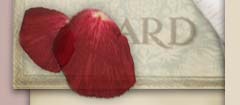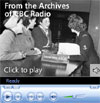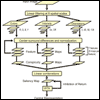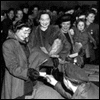Home > Canadian Wives Bureau
Excerpt from Chapter One, The War Brides of New Brunswick
After August, 1944, the DND went about organizing the movement of war brides with the precision of a D-Day assault. The Army was put in charge of moving brides and their children for all three services, the Army, Navy and Air Force.
Over the next two and a half years, representatives of the Department of National Defence, working out of the Canadian Wives Bureau, the Immigration Branch and the Canadian Red Cross worked closely together to ensure the safe and efficient transportation of thousands of servicemen's dependents to Canada.
One of the first things that the Army did when it took over the responsibility for transporting servicemen's dependents was to set up the Canadian Wives Bureau on the third floor of a fashionable and expensive store called Galleries Lafayette on Regent Street in London.
Established as a directorate of the Adjutant-General's Branch at Canadian Military Headquarters, the Bureau was responsible for arranging dependents' passage to Canada, collecting and caring for them en route to their ships, and providing information and welfare services. See Canadian Wives Bureau Flow Chart .
The Bureau also encouraged the formation of war brides' clubs in the United Kingdom, where brides could hold social gatherings and hear talks on life in Canada. As a sign of their success, by November, 1945, there were 32 brides' clubs functioning in England and Scotland.
By January, 1947, most of the war brides and their children were already in Canada, and it was clear that there was no longer any need for such an elaborate service. With the sailing of the last war bride ship on January 19, 1947, the Canadian government reassigned the responsibility for the transportation of servicemen's dependents to the Immigration Branch and by February 2, 1947, the Branch was once again issuing travel warrants to war brides and their children.
Over the course of the next fiscal year, between April 1, 1947 to March 31, 1948, the Branch assisted in the transportation of the final lot of 720 wives and 616 children, thus bringing the total number of servicemen's dependents to come to Canada between 1942-48 to 43,454 adults and 20,997 children, for a total of 64,451 dependents.
|






